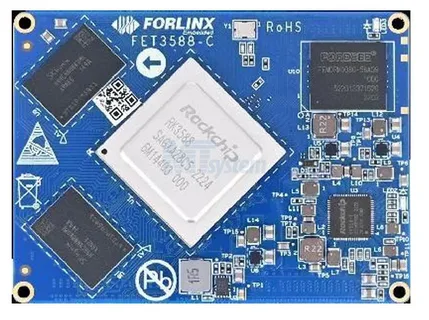RK3588 AD520688 Codec Debugging the rapid development of multimedia applications and embedded systems, debugging audio codecs has become a crucial skill for developers. This article provides a detailed guide for debugging the AD520688 codec on the RK3588 platform, including basic knowledge, environment setup, debugging workflow, problem troubleshooting, and optimization techniques to help developers efficiently complete audio development tasks.
H2: 1. Overview of the RK3588 Platform
The RK3588 is Rockchip’s latest high-performance SoC, widely used in smart audio, video playback, and AI devices. Its key features include:
- Octa-core CPU architecture (4× Cortex-A76 + 4× Cortex-A55)
- Multiple high-definition audio/video interfaces
- Integrated audio processing modules
- Flexible peripheral interfaces (I2S, PCM, TDM, etc.)
When debugging the AD520688 codec, it is essential to understand the RK3588 audio subsystem (Audio DSP and I2S interface) as well as the basics of the Linux ALSA framework.
H2: 2. AD520688 Codec Basics
Understanding the codec’s operation is the first step in debugging. This section covers its main features and register structure.
H3: 2.1 Codec Features
- Supports 24-bit/192kHz high-resolution audio
- Built-in digital filters and volume control
- Supports I2C/I2S control interfaces
- Integrated power management module for low power consumption
H3: 2.2 Codec Interfaces
The AD520688 typically communicates via I2C for control and I2S for audio data transfer. Key interfaces include:
- I2C Control Lines: Used to configure registers and change modes
- I2S Data Lines: Transmit audio streams
- GPIO Pins: For reset and interrupt signals
H3: 2.3 Key Registers for Debugging
During debugging, focus on these registers:
- Power Management Registers
- Volume Control Registers
- Data Format Registers
Reading and writing these registers helps verify the codec’s operational state and configuration.
H2: 3. Setting Up the Debugging Environment
To debug the codec efficiently, the proper hardware and software environment is required.
H3: 3.1 Hardware Requirements
- RK3588 development board
- AD520688 codec module or evaluation board
- I2C/I2S interface cables
- USB serial debugging tool
H3: 3.2 Software Requirements
- Linux kernel and device tree with AD520688 support
- ALSA audio driver
- I2C utilities (e.g.,
i2c-tools) and custom scripts - Audio testing tools (e.g.,
aplayandarecord)
H3: 3.3 Development Board Configuration
- Configure I2C bus addresses and verify communication
- Initialize the I2S interface and sample rates
- Load the AD520688 driver module and check system logs
Ensure all hardware connections are correct before debugging to avoid issues caused by power or signal errors.
H2: 4. Codec Debugging Workflow
The debugging process is divided into register verification, data transmission testing, and functional verification.
H3: 4.1 Register Verification
Use i2cget or a custom tool to read registers:
Check default values and configuration status to ensure proper initialization.
H3: 4.2 Audio Data Transmission Testing
- Play audio using
aplayto verify codec output - Capture I2S signals with an oscilloscope or logic analyzer
- Compare register configurations with actual data transmission
H3: 4.3 Functional Verification
- Test volume adjustments and mute functions
- Verify digital filter effects and sampling rates
- Validate power management modes for proper sleep and wake operations
H2: 5. Troubleshooting and Optimization
Even with proper setup, issues may arise during codec debugging. Common problems include:
- No audio output: Check I2C communication and power supply
- Distorted audio: Verify I2S format settings and sample rates
- Driver loading failures: Inspect kernel logs (
dmesg) for errors
Optimization tips:
- Adjust digital filter coefficients for better sound quality
- Reduce I2S latency by tweaking buffer sizes
- Ensure correct power sequencing for the codec
By systematically verifying registers, testing audio data, and troubleshooting issues, developers can achieve reliable audio performance on the RK3588 platform.








